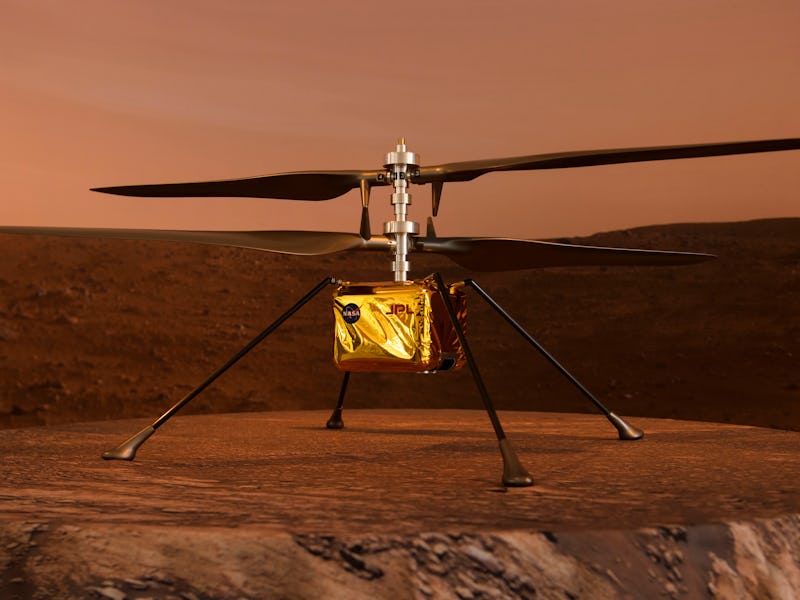NASA's Ingenuity Mars Helicopter Left Engineers on Read for A Week
NASA's Mars helicopter is fine, but we can expect radio silence more often.

Ingenuity marked its 50th flight with a late April Fool’s prank on its operators, going no-contact with them for almost a week in mid-April before finally responding just in the nick of time.
The Mars helicopter’s chief engineer, Travis Brown, recently revealed details of the helicopter’s nerve-wracking week of silence in a blog post.
The little helicopter was only supposed to make five flights — just enough to prove it was possible to fly in the thin air on Mars. It’s now logged 51, and moved on from proving it could fly to scouting routes and science goals for the Perseverance Rover. Ingenuity has done so, so well, but its human colleagues are in for more suspense and drama in the coming months.
Left on Read
At NASA’s Jet Propulsion Laboratory, Ingenuity’s team of operators thought everything was fine when they downloaded the data from the Mars helicopter’s 49th flight on April 2. Ingenuity had managed to snap its highest-altitude photograph yet, and it had finished a very successful science scouting flight a few days earlier. But on the 755th sol (Martian day) of the mission, when the crew on Earth tried to send Ingenuity instructions for its milestone 50th flight, they heard only silence.
The trouble with operating robots on Mars is that you’re 188 million miles away, and sometimes an $80 million space robot just disappears. It stops answering radio messages, and you may know exactly what happened, or you may have to wait for a satellite flyover to find the wreckage. It’s not a job for the faint of heart.
Ingenuity looks down at its own shadow during its first flight.
So the Ingenuity team was relieved, to put it mildly, when the helicopter finally pinged out a faint reply to Perseverance’s radio calls. A couple of sols later — it was April 23 back here on Earth — the crew at JPL managed to send Ingenuity its instructions for Flight 50.
It turned out that a rocky ridge had blocked radio signals between Ingenuity and Perseverance, and the rover’s body may actually have been blocking the antenna it uses to call Ingenuity.
Not in “Martian Kansas” Anymore
Things are only going to get harder for Ingenuity, and more nerve-wracking for its loyal crew of humans. For one thing, the terrain Ingenuity and Perseverance are working their way across is uneven and not as well-mapped as the area around Wright Brothers Airfield, where Ingenuity made its first few flights.
“We are not in Martian Kansas anymore,” said Josh Anderson, Ingenuity operations lead at JPL, in a statement. “We’re flying over the dried-up remnants of an ancient river that is filled with sand dunes, boulders, and rocks, and surrounded by hills that could have us for lunch. And while we recently upgraded the navigation software onboard to help determine safe airfields, every flight is still a white-knuckler.”
Meanwhile, Ingenuity has now logged 10 times as much flight time as it was originally built for, and some of the helicopter’s components are starting to wear out. The Mars helicopter is also facing the same challenge as every other robot we send to Mars: dust piling up on its solar panel. Ingenuity’s days are numbered, but nobody can guess the number yet.
“When we first flew, we thought we would be incredibly lucky to eke out five flights,” said Teddy Tzanetos, Ingenuity team lead at JPL. “Every operational day is a blessing. Whether Ingenuity’s mission ends tomorrow, next week, or months from now is something no one can predict at present.”
This article was originally published on